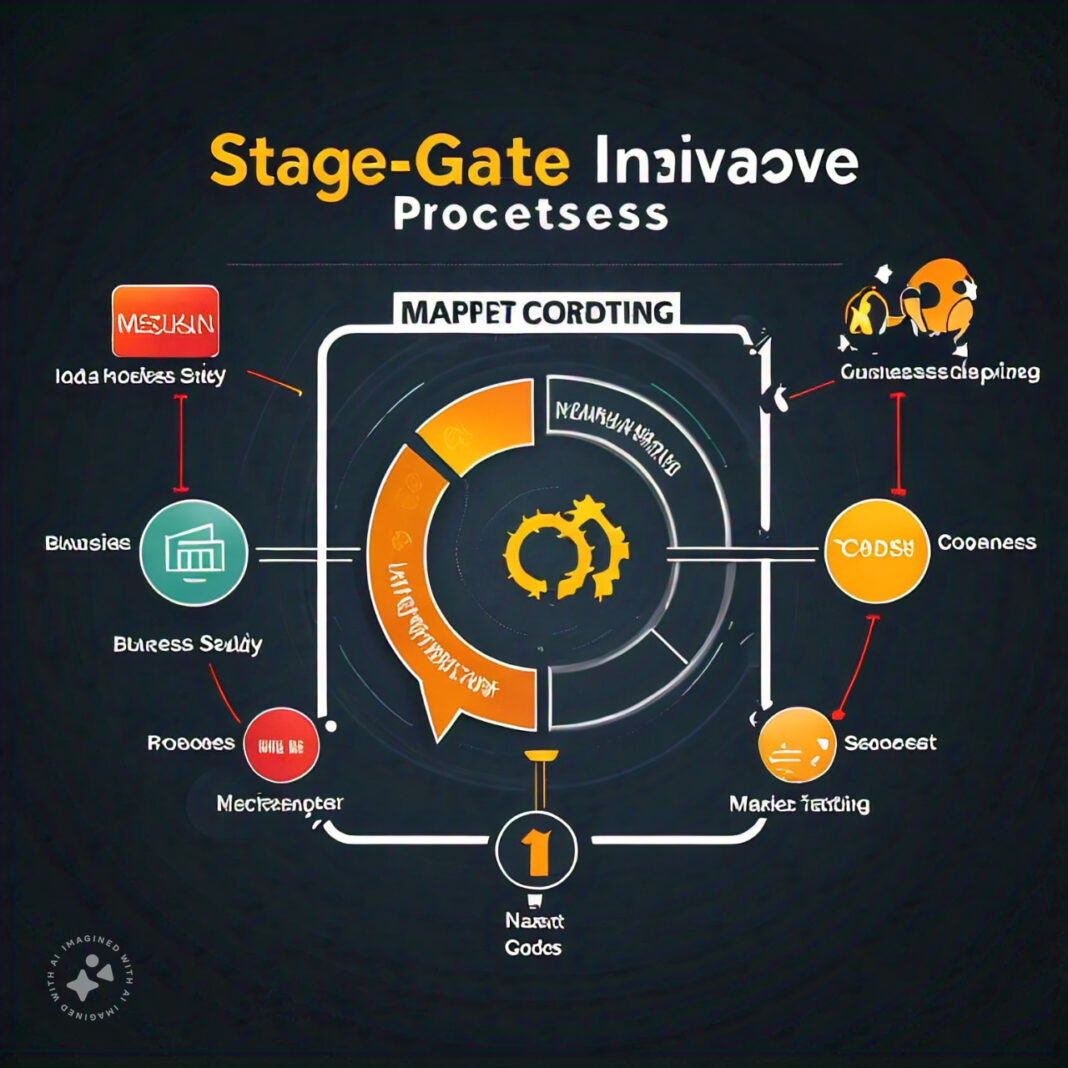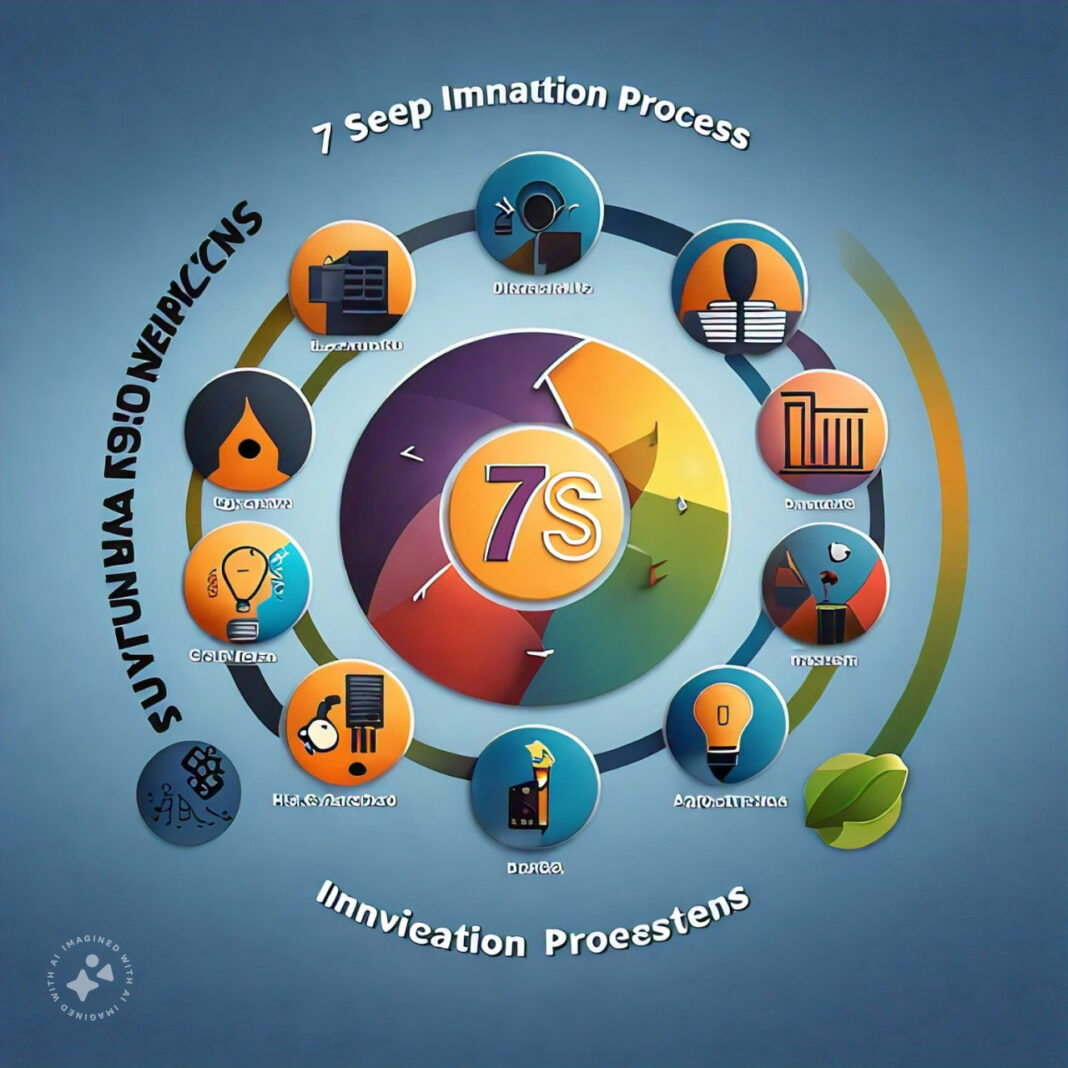The Stage-Gate innovation process provides a conceptual and operational roadmap to guide new product projects from idea to launch. It decomposes the innovation process into a series of stages; each stage is composed of required, cross-functional, and parallel activities. Between each stage is a gate that serves as a quality control checkpoint.
In essence, the Stage-Gate process aims at better effectiveness and efficiency in the development of new products. The process leads a new product project through specific, systematic steps of development, evaluation, and decision-making. Through such a defined process, it helps organizations manage risks, focus resources, and maximize chances of launching successful products.
There are five stages to the typical Stage-Gate model:
- Scoping
- Build Business Case
- Development
- Testing and Validation
- Launch
Before each stage is a gate at which go/kill decisions are made. These gates represent quality control points that ensure only the most promising projects proceed to the next stage. - The Evolution of Stage-Gate: From Concept to Modern Practice
Stage-Gate has at least 20 years of history, dating back to the 1980s. Dr. Robert G. Cooper is credited with developing the notion of Stage-Gate as applied to the output of research on why products succeed. He already had given a first model in response to a business environment where competition was bringing about a demand for a more structured product development methodology.
Over the years, the Stage-Gate process has evolved to meet changing business needs:
- Initial Stage-Gate versions were often rigid and linear—and sometimes provided no faster development cycle.
- Newer versions have introduced flexibility through overlapping stages and built-in flexibility based on some agile-based methodologies. One concept is “spiral development” in which teams are allowed to recycle through the process to keep coming back to their ideas where they left off to always make them better.
- The newer models emphasize customer feedback throughout the process and therefore enable market-driven innovation.
New products and services are brought to life with the current Stage-Gate models, a few digital tools and platforms being facilitators of collaboration and decision-making but without putting much emphasis on them. They are also more flexible with firms able to adjust the process to suit the business or industry in which they are working.
The Detailed Stages: An In-Depth Review of Each Phase
Now let’s get into the details of each key aspect of what goes through at every stage of a typical Stage-Gate:
Stage 0 – Discovery: Here, right at the outset, an opportunity is discovered; it’s a place for generating ideas. This is a continuous process because only new insights from market research, customer needs, and the progress of technology can move these ideas to the next stage of development.
Stage 1: Scoping – This stage is the initial quick investigation, whereby the technical merits and market prospects of the project are explored. It is usually desk research-based and previews whether this is an idea worth pursuing further.

Stage 2—Build Business Case: It is more advanced research made up of primary—market and technical—research. It would be intended to deliver a clear definition of the product, create a business case, and provide a detailed project template.
Stage 3: Development —This is the phase of actual designing and development of the new product. Technical work is done, manufacturing or operations plans are mapped out, and marketing and launch plans are developed.
Step 4 – Testing and Validation: It is important to figure out in this stage whether the product, the manufacturing process, customer acceptance, and the economics of the project work or not. This may involve lab tests, plant tests, customer tests, and trial sells.
Stage 5 — Launch: This is the final stage and includes full commercialization of the product. It is when production and marketing reach higher gears, and the product finally makes its way to its intended market.
- The Gates: Decision-Making Checkpoints in the Innovation Journey
Gates are the checkpoints that come before each stage in the Stage-Gate process. They serve a few key functions:

- Quality Control: Gates assures that only quality projects advance.
- Go/Kill Decision Points: For each checkpoint, the decision gets taken to go further with investment in the project or kill it.
- Prioritization: it helps to put projects in order of priority and to allocate resources accordingly.
Each of the gates generally follows a similar composition:
- Deliverables: Specific outputs from the previous stage are delivered by the project team.
- Criteria: The project is measured through a series of tests established in advance or based on the best practices.
- Outputs: Decision made and next stage plan approved (go/kill/hold/recycle).
Gate meetings are typically attended by senior managers who are the “gatekeepers.” The decision-making process evaluates the project’s progress to date, re-evaluates its continuing business or resource rationale and then makes a decision regarding its future. - Implementing Stage-Gate Process: Benefits
The below-mentioned are the benefits that a Stage-Gate innovation process provides to any organization:
The Stage-Gate process significantly compresses the time to market a product concept by providing a clear pathway and killing weaker projects at an early stage.
Success Rates: The disciplined approach provided by Stage-Gate enables the detection and correction of issues at an early stage, leading to new product success rates being superior.
More Effective Use of Resources: As weaker projects are killed in the early stages of commercialization, resources can be invested in better opportunities.
- Improved team collaboration: The cross-functionality of the Stage-Gate approach to the model enhances the collaboration of team members about different functional units of an organization.
- Improved Decision Making: Decisions made in the gate review phase are based upon explicit criteria and sound information.
- Risk Lowering: The product development process at each stage is divided, and evaluation takes place at each step, which lowers the risk of the overall product development process.
- Criticisms and Challenges of the Stage‐Gate Model
While Stage-Gate has worked for so many organizations, it still has several challenges and a fair share of critics, such as:
Potential for Bureaucracy: In its not-so-efficient implementation, Stage-Gate can sometimes become overly bureaucratic, slowing down innovation.

Rigidity: The systematic nature of Stage-Gate can be inhibitive of creativity and flexibility.
Resource Intensive: Investment, and monitoring of, a Stage-Gate system requires significant resources and commitment.
- May Not Be Palatable for All Projects: The traditional Stage-Gate model may not be appropriate for all types of innovations, even more, when the project is comparatively more disruptive or fast-moving.
- Risk of False Positives: There will always be the inherent risk for projects to be pushed through gates, even when they should have been killed off, just because organizational pressures or emotional attachment associated with it.
- Best practices in successfully implementing a Stage-Gate system
Get the maximum mileage that the Stage-Gate process is inevitably going to deliver by use of the following practices:
Customize the Process: Make adjustments to the Stage-Gate model to suit the organization’s culture and needs.
Build Executive Support: The strongest possible executive leadership support is indispensable for implementing and continuing to use Stage-Gate.
Train Your Team: Every participant in this process must be trained.
Use Clear Criteria: Develop clear, measurable criteria by which projects will be evaluated at every gate.
- Be Agile: Be flexible to iterate and to always enable cycling back to the previous stages where necessary.
- Engage Customers: At each stage, work with the customers.
- Use Technology: Use project and collaboration software to help automate your Stage-Gate process.
- Improve Continuously: From learnings and outcomes, review and enhance the Stage-Gate process periodically.
- Using Stage-Gate in Different Industries and Project Types
Although the Stage-Gate process was primarily devised for innovating physical products, it has since been adapted according to industry requirement and the type of project. For instance,
- Software: Embed agile methodologies within a Stage-Gate framework.
- Services innovation: Build stages for service design and customer experience.
- Process innovation: Gates designed more towards operational efficiency and cost reduction.
- B2B Products: The process must be adapted to support longer sales cycles and greater customer intimacy.
- Fast-Moving Consumer Goods: The number of stages should be reduced to compress product life cycles.
The key to adaptation is to keep the principles of the Stage-Gate but to customize the fine print according to the specific nature of your business and project type.
- Stage-Gate Tomorrow: Trends and Innovations
The fact is that the Stage-Gate process keeps evolving paralleling business environments. Some emerging trends in this respect are:
Integration with Agile: Organizations are figuring out ways to blend the strictness of Stage-Gate with the fluidness of Agile.
More digitalization: The use of digital tools, more and more automatic, to make some parts of the process quicker and make real-time collaboration easier.
Sustainability: Second order effects due to the process on the environment and on society are, more and more aspects, integrated into the gate criteria.
- Open innovation: An up gradation from the theory above is that it includes external partners.
- AI and Machine Learning: Technologies like these assist to make the decisions at gate process more intelligent and which in turns assist in optimizing the overall process.
Conclusion: Whether Stage-Gate is suitable for your organization
A lot of organizations, therefore, see the Stage-Gate innovation process as a practical and potent tool in striving toward stepping up new levels of product development. Logically followed and thoroughly applied in principle, it leads to reduced times to market and optimized resource allocation while raising the new product success rate.
However, implementation of Stage-Gate in practice is not a one-size-fits-all solution; rather, it needs proper attention to the special needs, culture, and project types that an organization must undertake. Successful Stage-Gate requires proper customization and inculcation with efforts of management support and continuous improvements.
Last but not least, if you consider whether Stage-Gate fits your organization, remember that the goal is to create a systematic approach to innovation that balances structure with flexibility, risk management with creativity, and efficiency with thoroughness.
This then adapted to your specific necessities, becomes a potent framework using the principles of Stage-Gate to create a massive surge in innovation through this modern, fast-changing, competitive business world.






